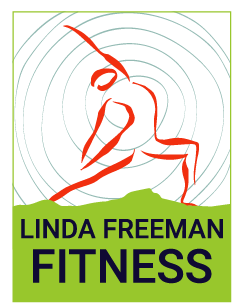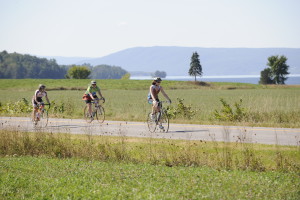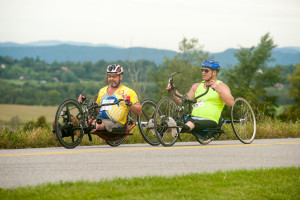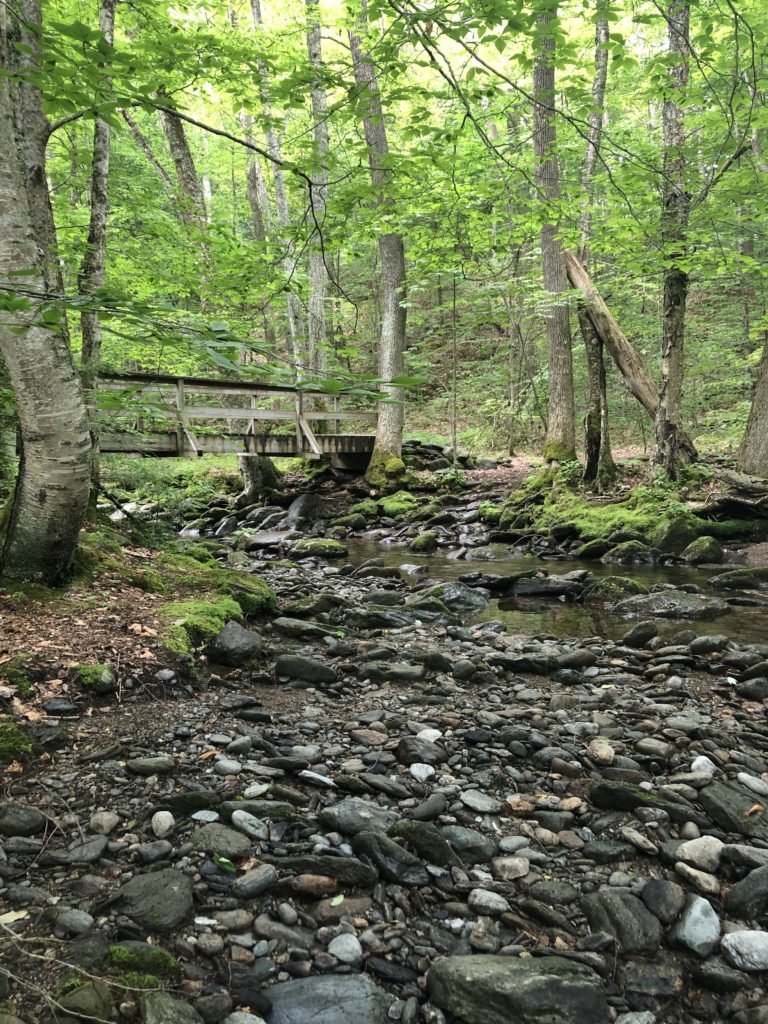 Sharing the summer months with an informal group of individuals loosely connected by their interest in hiking is proving to be a learning experience for all of us. Arguably, any able-bodied person can hike. But does everyone want to? No. I certainly didn’t.
Sharing the summer months with an informal group of individuals loosely connected by their interest in hiking is proving to be a learning experience for all of us. Arguably, any able-bodied person can hike. But does everyone want to? No. I certainly didn’t.
Until 3 summers ago I loudly complained about the rocks and roots and snakes and bugs and shadows and mud and heat and cold and schlepping and slipping and …. Skeptical to hike alone (probably not a bad thing to avoid especially since I have/had a tendency to get lost) and fearful of bears (yeah, I know, they are hopefully more afraid of me), I was surely a poor candidate for the sport.
 And then came Sophie, my now almost 3-year-old Chocolate Lab who opened this wonderful world for me. Because training is in my psyche, poor Sophie underwent/undergoes lots and lots of training. An exuberantly friendly pup (she IS a Lab, after all) with reliably good trail manners, she also serves as a canine GPS. All this is to say that because there is nothing (except swimming) that Sophie loves more than trails, I have become an avid hiker!
And then came Sophie, my now almost 3-year-old Chocolate Lab who opened this wonderful world for me. Because training is in my psyche, poor Sophie underwent/undergoes lots and lots of training. An exuberantly friendly pup (she IS a Lab, after all) with reliably good trail manners, she also serves as a canine GPS. All this is to say that because there is nothing (except swimming) that Sophie loves more than trails, I have become an avid hiker!
Though I have seen the uninformed exit their vehicle at the trail head and set off with nothing but the clothes they’re wearing and most likely highly inappropriate footwear, enjoy an eye-popping great experience when they summit. I have also witnessed the inexperienced and ill-prepared turning back early, nursing blisters, or worse. (I once shared Sophie’s water with a dangerously thirsty guy.)
Over the past two months I have kept an eye on a disparate group with equally disparate goals, professional and family obligations, time constraints and fitness levels. At the halfway point I see that the initial goal is not really working for some, some seem to have changed their minds about participation, and yet others excite me with their obvious strength, pace and distance gains while at the same time still others challenge me to keep up with them! What I am loving about this group is finding the joy of hiking shared surpasses the task of hiking alone. (Note, there is also a sweetness to the solitary experience; but that is a subject for another post.)
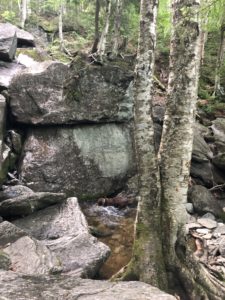 How does one define hiking, anyway? There are meandering forest trails, picturesque bogs, barely defined paths, and rocky climbs with steep precipices and vistas to die for. It’s all hiking and, ultimately, it’s all about making the decision to get out the door and go.
How does one define hiking, anyway? There are meandering forest trails, picturesque bogs, barely defined paths, and rocky climbs with steep precipices and vistas to die for. It’s all hiking and, ultimately, it’s all about making the decision to get out the door and go.
As we hike along with others, there are times of companionable conversation and times of reflective silence. Trail etiquette suggests that this is not the time, however, for loud chatter or, please no(!), a cell phone visit. (Yes, there are exceptions to every rule. If hiking in an area with active bear sightings, it’s a good idea to make some noise. Sophie wears a bear bell on her collar and a hiking buddy has attached one to her pack.)
Often conversation prompts sharing of so much more pertinent information than one can Google – news of other trails, reports on new boots or shoes, what kind of insect repellent does or does not work, what is the best snack or electrolyte drink, what do you think of hiking poles, what resources are you using, and on and on.
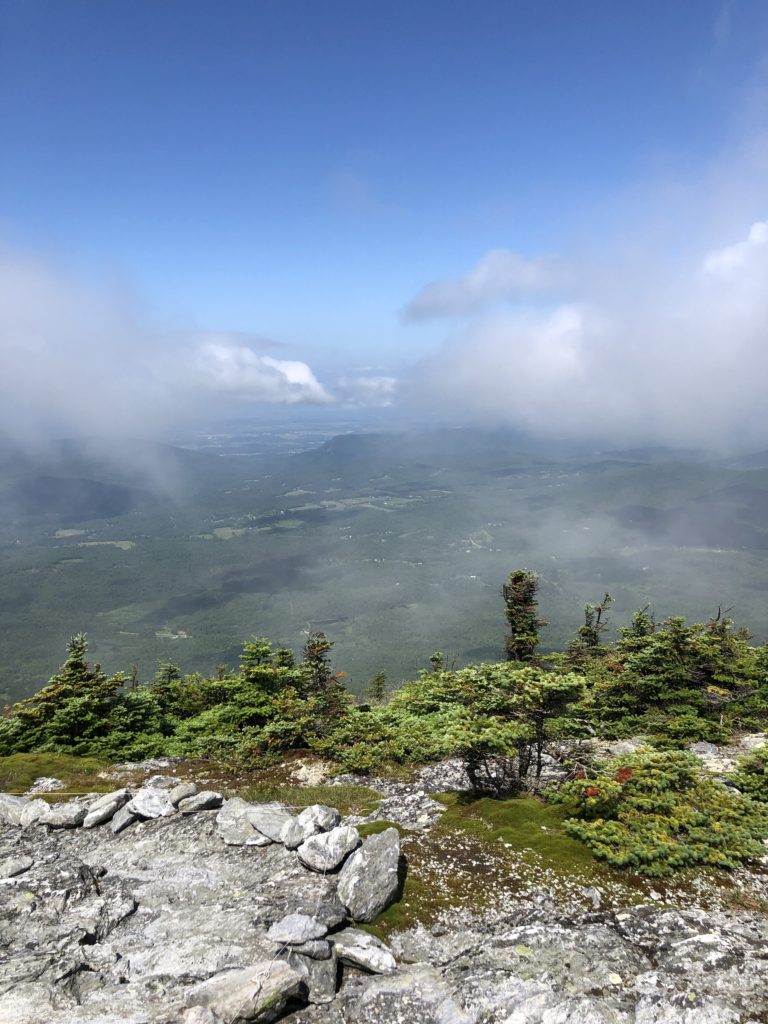
Mt. Abe, Long Trail, Vermont, July 2019.
Experience is an invaluable teacher. On my last hike, for example, one that I know fairly well and love because it is deliciously challenging, I made a few rookie errors and lagged behind as I finally scaled some totally fun rocks.True confessions:
- I needed to retie my shoes to tighten them up a bit, but didn’t want to stop for fear I would fall farther behind. Wrong.
- Because it was chilly at the early a.m. start, I layered on a long-sleeve top that I needed to take off, but didn’t want to stop for fear I would fall farther behind. Wrong.
- With a relatively long drive to the trail head, I had rushed out of the house with only a few bites of my usual pre-hike breakfast (oatmeal, Icelandic plain yogurt, walnuts and dried tart cherries), and badly needed to refuel with either a few bites of dates or a bar or, even more importantly, a few swallows of my favorite electrolyte drink (Tailwind), but didn’t want to stop for fear I would fall farther behind. Wrong.
And so, I fell farther behind. Granted, it took under 2 hours to summit, but duh! Retied shoes, shed layer, swigged some liquid and I was flying. Again, DUH!
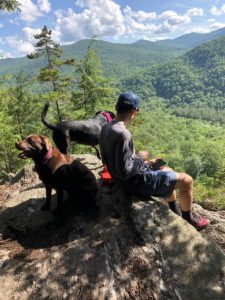 Each hike, each day, each weather condition, each hiking partner(s), each new pair of shoes, each trail snack, each guide book, each hangover (oops), each season, each year – there are no two hikes alike and no one hike that stays the same. It’s all experience – and connection.
Each hike, each day, each weather condition, each hiking partner(s), each new pair of shoes, each trail snack, each guide book, each hangover (oops), each season, each year – there are no two hikes alike and no one hike that stays the same. It’s all experience – and connection.

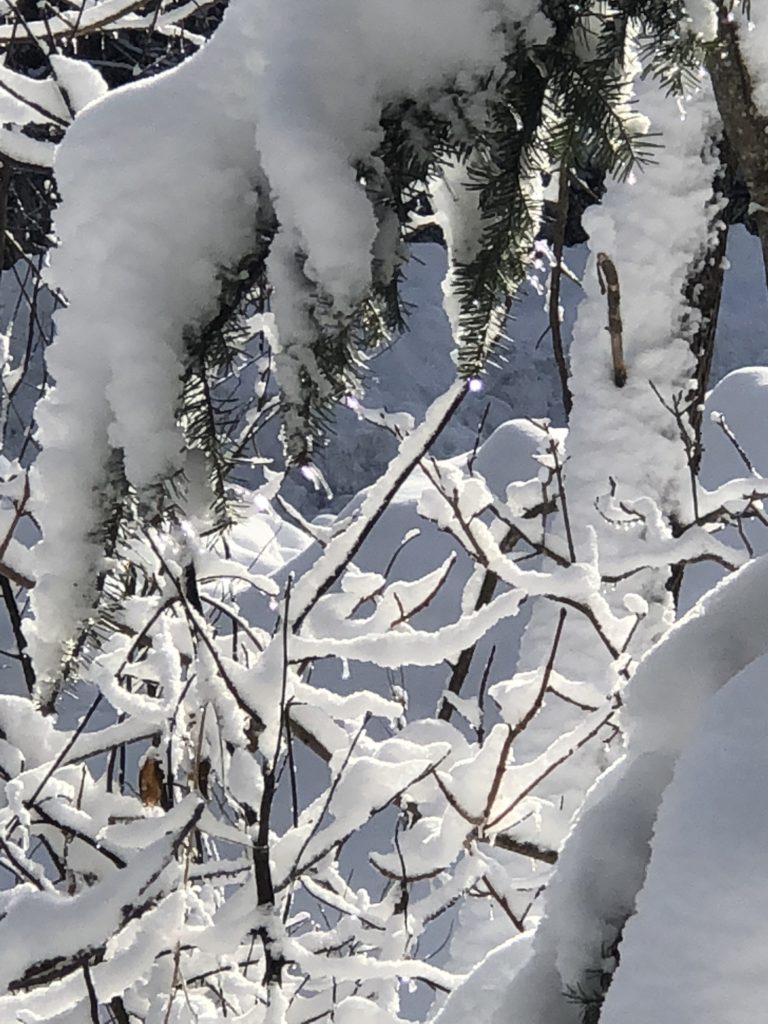
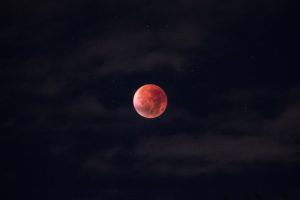
 Because I write in the venue of fitness, health, and well-being, I tend to translate what I encounter as applicable to the same. For example, I learned that the full moon is a call for balance. OK, physical balance is a no-brainer but so is balance in all aspects of our training and life experience. I hear that an eclipse represents power and fruition and can be transformative. Ditto.
Because I write in the venue of fitness, health, and well-being, I tend to translate what I encounter as applicable to the same. For example, I learned that the full moon is a call for balance. OK, physical balance is a no-brainer but so is balance in all aspects of our training and life experience. I hear that an eclipse represents power and fruition and can be transformative. Ditto.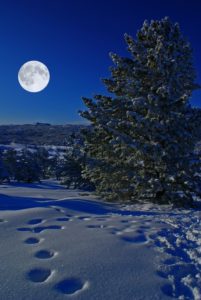 Nor is it all about darkness. What’s wrong with night skiing or skating at lighted venues or a moonlight snowshoe? (Perhaps the only caution here is to be certain of the route, let someone know where we are going, and please try not to get lost and tax a local rescue team. Maybe now is the time to learn how to use one of the many apps guaranteed to keep us from doing so!)
Nor is it all about darkness. What’s wrong with night skiing or skating at lighted venues or a moonlight snowshoe? (Perhaps the only caution here is to be certain of the route, let someone know where we are going, and please try not to get lost and tax a local rescue team. Maybe now is the time to learn how to use one of the many apps guaranteed to keep us from doing so!)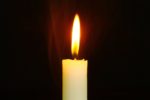 And, finally, a few words to ponder: “I will love the light for it shows me the way, yet I will endure the darkness for it shows me the stars.” (Og Mandino)
And, finally, a few words to ponder: “I will love the light for it shows me the way, yet I will endure the darkness for it shows me the stars.” (Og Mandino) 
 On the other hand, the slippery roots, muddy patches, and dense yet soundless dimness of the woods guided me back to my morning Yoga practice. I was ‘taking my practice with me through the remaining hours or my day.’
On the other hand, the slippery roots, muddy patches, and dense yet soundless dimness of the woods guided me back to my morning Yoga practice. I was ‘taking my practice with me through the remaining hours or my day.’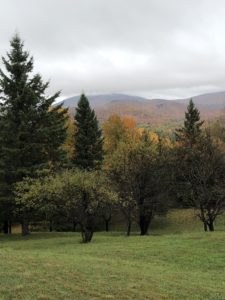
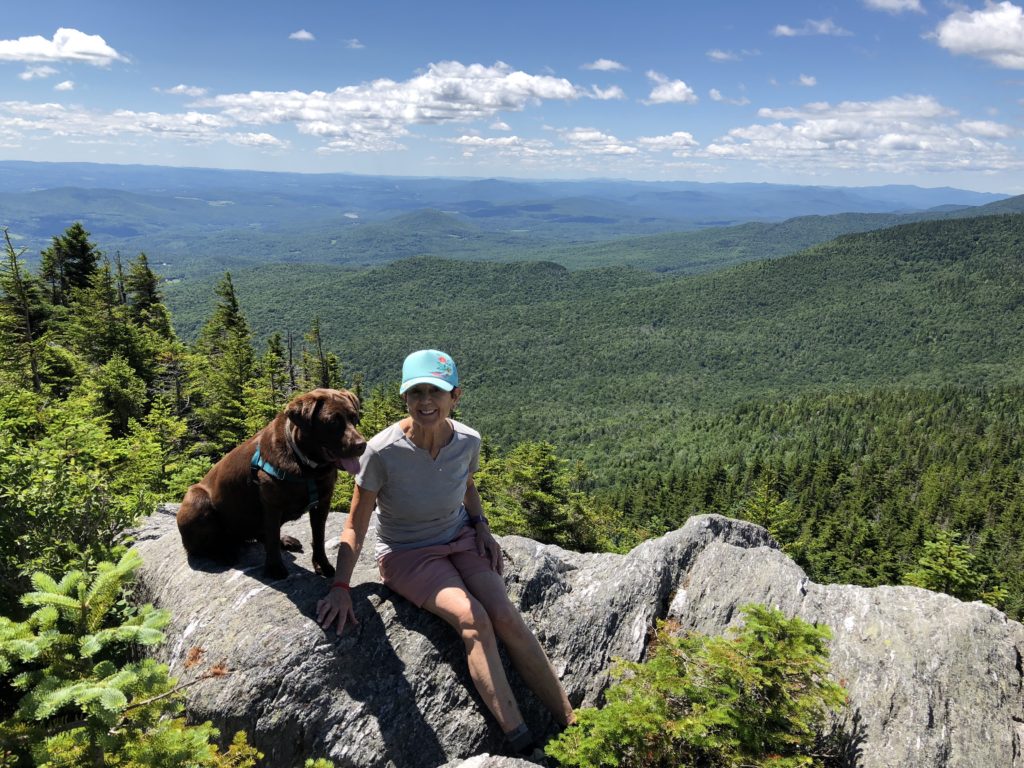
 For many, this is the entire purpose of hiking. For others it is a perfect lunch break, rest or photo op. Note: if hiking with dogs or children, beware of fragile vegetation at the summit or potentially hazardous drop offs. Safety and consideration always rule.
For many, this is the entire purpose of hiking. For others it is a perfect lunch break, rest or photo op. Note: if hiking with dogs or children, beware of fragile vegetation at the summit or potentially hazardous drop offs. Safety and consideration always rule.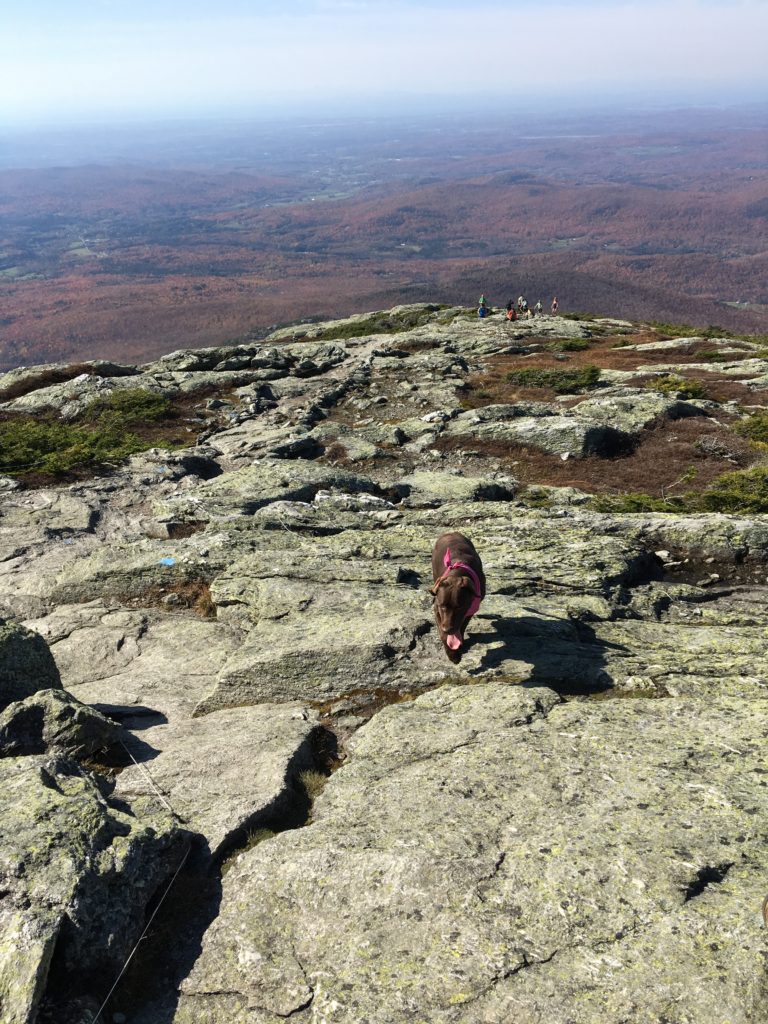
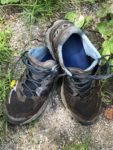 for the most part because I opt for traction and flexibility but my ankles sometimes call out for higher boots, etc), poles, and a pack. Note: when I hike the Whites or with my friends, I am the only one without poles. In the past I have cited my need to have hands free for Sophie. Now, with my new vest that easily snaps in folded poles, I have a pair on order. When I hike on easier day hikes in Vermont, I see many without poles. Good to have options! Oh, and BTW, Ultimate Direction now makes poles with 2 levels of handgrips that so easily address the dilemma of uphill and downhill
for the most part because I opt for traction and flexibility but my ankles sometimes call out for higher boots, etc), poles, and a pack. Note: when I hike the Whites or with my friends, I am the only one without poles. In the past I have cited my need to have hands free for Sophie. Now, with my new vest that easily snaps in folded poles, I have a pair on order. When I hike on easier day hikes in Vermont, I see many without poles. Good to have options! Oh, and BTW, Ultimate Direction now makes poles with 2 levels of handgrips that so easily address the dilemma of uphill and downhill 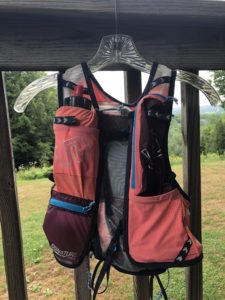
 I always wear a baseball cap and my RoadID bracelet with emergency contact info; states that I am hiking with my dog just in case…and Sophie’s collar sports her name and a phone #)
I always wear a baseball cap and my RoadID bracelet with emergency contact info; states that I am hiking with my dog just in case…and Sophie’s collar sports her name and a phone #)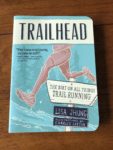
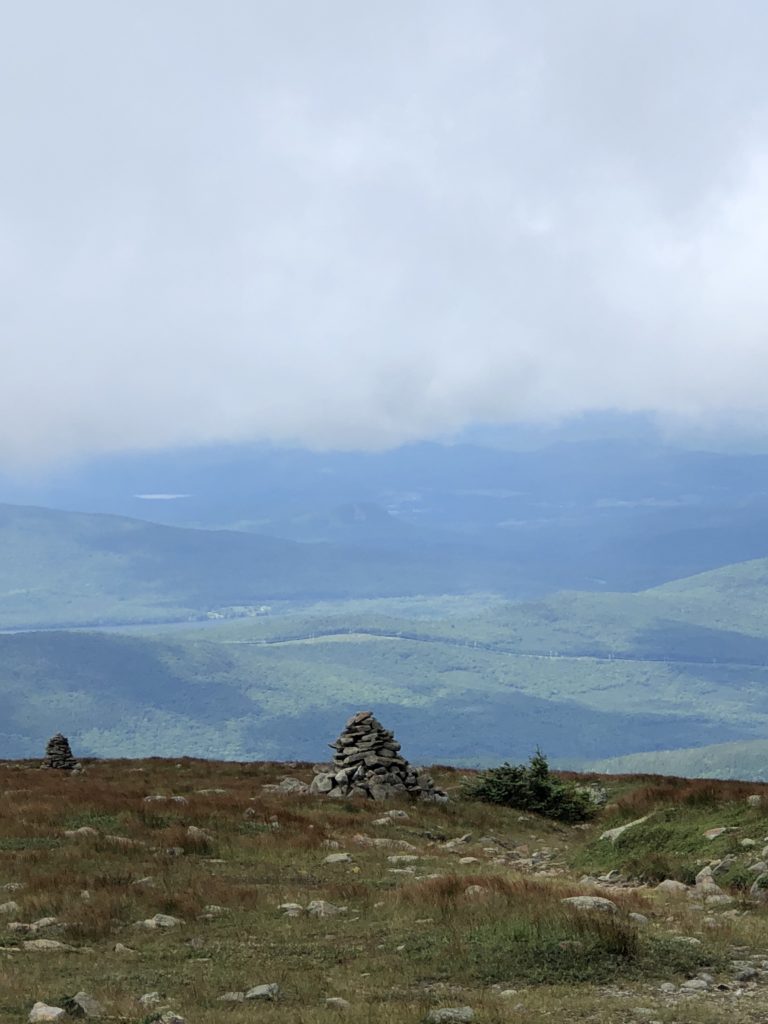
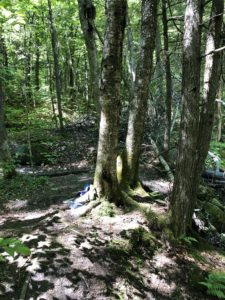 : Both stillness and movement are deepened by enhanced senses of sight, hearing, touch and smell. Changes in air quality over the time spent in practice are palpable; air movement touches the skin as a reminder that the world is always in motion. Bird song accompanies asana and provides easy focus for meditation. (Depending on where you practice you might hear city sounds or water rolling, crashing or babbling.) While plants, soil and trees exude smells of their own, the very scent of freshness is real. Practice yoga, practice meditation, practice balance, practice awareness.
: Both stillness and movement are deepened by enhanced senses of sight, hearing, touch and smell. Changes in air quality over the time spent in practice are palpable; air movement touches the skin as a reminder that the world is always in motion. Bird song accompanies asana and provides easy focus for meditation. (Depending on where you practice you might hear city sounds or water rolling, crashing or babbling.) While plants, soil and trees exude smells of their own, the very scent of freshness is real. Practice yoga, practice meditation, practice balance, practice awareness.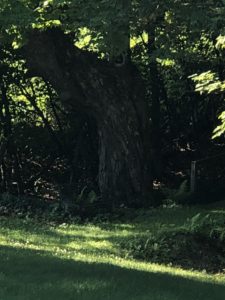
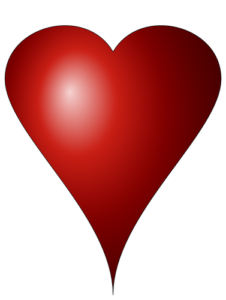
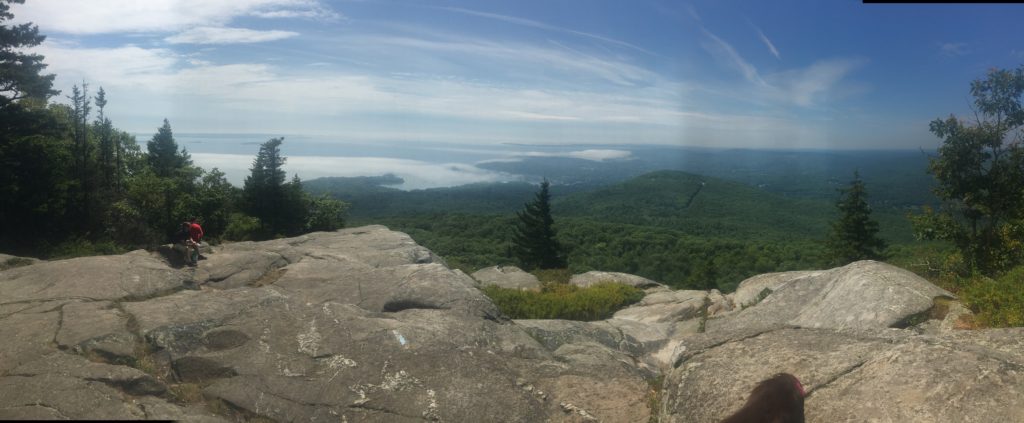
 bouncing color and energy off the surface of the water. (No wonder Sun Salutations are integral to one’s Yoga practice.) Though the sunset on the other side of the peninsula is equally dramatic, there is something oh so lovely about its residual glow from our deck. And the full moon? There are not words …. But if it weren’t for the deck, would I pause to sit there and observe?
bouncing color and energy off the surface of the water. (No wonder Sun Salutations are integral to one’s Yoga practice.) Though the sunset on the other side of the peninsula is equally dramatic, there is something oh so lovely about its residual glow from our deck. And the full moon? There are not words …. But if it weren’t for the deck, would I pause to sit there and observe?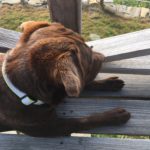 My family and I can talk endlessly, but there always comes the fall into a reverent or contemplative silence – just watching. Tides ebb and flow, lobster boats motor up and down the sound working while I play, fish rise and re-enter with a significant slap, ducks search for food as cormorants dive under for so long I wonder if they’ll ever reappear. They do.
My family and I can talk endlessly, but there always comes the fall into a reverent or contemplative silence – just watching. Tides ebb and flow, lobster boats motor up and down the sound working while I play, fish rise and re-enter with a significant slap, ducks search for food as cormorants dive under for so long I wonder if they’ll ever reappear. They do.